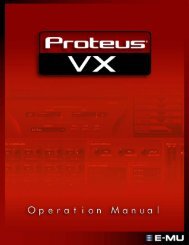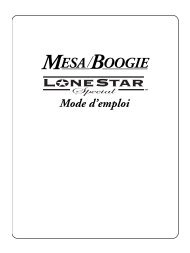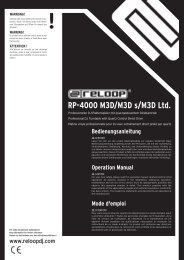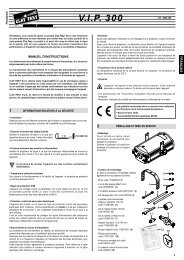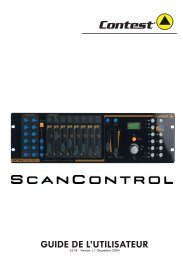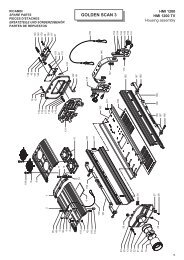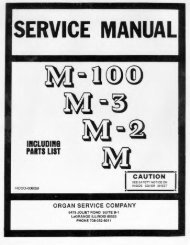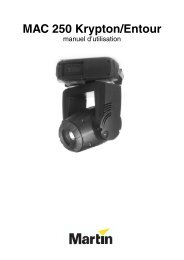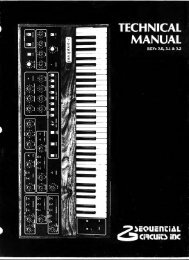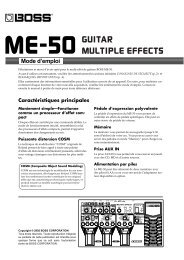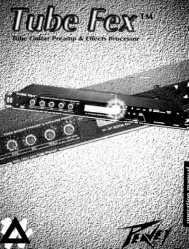You also want an ePaper? Increase the reach of your titles
YUMPU automatically turns print PDFs into web optimized ePapers that Google loves.
The Algorithms and their ParametersNote that none of these shape effects are audible unless RTIM is set shortenough. Generally, RTIM should be set to a value of about 1.2 seconds for smallrooms, and up to 2.4 seconds or so for halls. SIZE should also be set to a valueappropriate to the desired hall size (note, however, that small sizes color thereverberation).15 meters makes a very small room, and 38 meters is useful fora large hall.Used with care SHAPE and SPREAD allow the 300 to produce superiorambience—a sound which is spacious and has great depth—without the longreverberation of a church.The Random Hall algorithm in the 300 incorporates random delay elements.These elements have several effects. First, there is a reduction of long-livedmodes in the reverberant decay, which makes the decay less metallic andreduces the apparent reverb time. The random elements also improve thesteady-state timbre of the program.Random DelaysThe speed at which the delay elements move is controlled by SPIN. Values ofSPIN which are higher than about 38 can cause audible pitch wobble in verycritical material (such as classical guitar or piano and can also cause noise onpure tones. This noise is not audible in speech, however, and, for mixed musicor speech, values up to 48 will give an improved sound. WANDER is typically setto about 10ms at larger settings of SIZE. The effect of WANDER is reduced forsmall SIZEs.When you set out to create a sound, the first and most important decision is howbig a space you want. The best way to start is to listen to several presets andchoose the one which sounds closest to what you have in mind. If necessary, useSIZE to make a slightly larger or smaller sound, as needed.Creating a Realistic SoundNext use RTIM to fine-tune the amount of time the reverberation takes to dieaway at the end of musical phrases. Actual halls vary a great deal in their actualRTIM values. The setting of the BASS is also critical in matching the sound ofan existing hall. An ideal concert hall would have a BASS setting of 1.2. It is rarewhen actual physical spaces exceed 1.5. Many (if not most) good recordingenvironments have values of BASS of 1.0 or less, so a value of 0.8 could be triedwhen attempting to match an existing hall.There are two additional controls to deal with. SHAPE and SPREAD adjust theeffective reverb time when the music is running. Higher values of SHAPE andSPREAD produce a longer effective reverb time. Longer effective reverb timesgive greater spaciousness to the sound.The 300 reverberation algorithm offers the option of adding early reflections (preechoes)which have been made into diffused clusters of pre-echoes. The densityof the cluster is set by the DIFFUSION control. We recommend that these preechoesbe used with caution, unless you are trying to match the sound of thereverberation to a particular location where such reflections are strong.4-3


